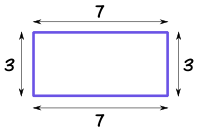We know how to measure around the
outside of a shape, but how do we measure the space inside it?
All content provided on this blog is for informational purposes only. The owner of this blog makes no representations as to the accuracy or completeness of any information on this site. This blog is for information and resource use only and not owned or subject to copyright by the creator of this blog. All posts are a product of research and compiled information. The owner is not responsible for the republishing of the content found on this blog nor claims ownership to its original content.
Friday 7 October 2016
Perimeter
Thursday 6 October 2016
Illustrating Data
Illustrating Data
Using
visual representations to present data makes them easier to understand. When you
decide what kind of graph or chart best illustrates your data, you should
consider what type of data you are working with.
Graphs
and charts condense large amounts of information into easy-to-understand
formats that clearly and effectively communicate important points
Different types of graph and chart have
different uses.
The Link Between Fractions, Decimals & Percentages
The Link Between Fractions, Decimals & Percentages
Any number can be written as a fraction, decimal or percent. The term percent is simply
another name for hundredths. For example, 25% (twenty-five per cent) is the same as 25/100.
To multiply a decimal number by 10, simply move the decimal point one place to the right. To multiply by 100, move the decimal point two places to the right.
To multiply a decimal number by 10, simply move the decimal point one place to the right. To multiply by 100, move the decimal point two places to the right.
Wednesday 5 October 2016
Multiplication as a Quick Way of Adding & The Multiplication Square
Multiplication
as a Quick Way
Multiplying is a quick way of adding.
If you are unsure of your multiplication tables; use this square to help.
Remember: to inverse check; use division.
Inverse Operations - Checking Your Answers
Inverse operations are opposite operations that undo each other. Addition and subtraction are inverse
operations. Multiplication and division are inverse
operations
You can check your
answers to math problems by using inverse
operations (back checking) or by
plugging your solution back into the original problem and reworking it. To
learn how, find the section below that pertains to the type of problem you'd
like to check.
Mean / Mode / Median / Range
 Mode, median and mean are three different types of average.
Mode, median and mean are three different types of average. The mean is found by adding up all the data and dividing by how many pieces of data there are.
The median is the middle value when the data is put in order of size.
The mode is the most common piece of data.
The range is the difference between the biggest and the smallest number.
Tuesday 4 October 2016
Graphs & Charts
The Wales Essential Skills Toolkit (WEST)
Monday 3 October 2016
Find Percent
'Percent' means
'out of 100'.
If 90 per cent of the population owns a mobile phone, this means
90 out of every 100 people have one.
The symbol '%' means per cent.
Monday 26 September 2016
BODMAS
Explain Calculation Methods
Why
can’t you just do the problem, enter the answer and be done with it?
Subscribe to:
Posts (Atom)












